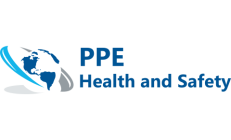
Hand sanitizer sales are still burgeoning months after COVID 19 unleashed its infectious rage on society. With the growing demand for this personal hygiene product, supermarkets, convenience stores, and pharmacies have imposed a per-consumer cap. In retrospect of this market shift, various channels are emerging as direct-to-consumer platforms, for example, PPE directories. Also, new producers have overrun the market, but there’s still an incredible depression as far as personal protection items go. What types of hand sanitizers are best to combat coronavirus pathogens?
Using alcohol-based hand sanitizers against COVID 19
While the Centers for Disease Control or CDC recommends hand sanitizers as a first-line protection strategy for coronavirus, there’s a type. Questions of efficacy remains a swirling topic out there as confirmed cases reach new highs. Yes, it sounds simple; hand sanitizers can be an alternative to fight against the SARS-CoV-2 virus when soap is unavailable. Plus, it must have the right formulation and alcohol concentration to work effectively. As per CDC guidelines, hand sanitizers must contain 60 percent or more alcohol.
Are hand sanitizers scarce?
From the outset, hand sanitizers have been on the list of PPE items in high demand globally. Due to the overwhelming demand and fast-escalating situation as SARS-CoV-2 infections hit new highs, health authorities approved homemade formulas. While encouraging this practice, they are re-emphasizing proper hand hygiene guidelines. Furthermore, hand sanitizers are only an alternative when soap and water are unavailable. The contact time for gel hand sanitizers should last at least 20 seconds as per CDC guidelines. Also, WHO-recommended hand rub formulations that contain 30 percent isopropanol or ethanol can neutralize the virus on contact.
New study: Can hand sanitizers inactivate SARS-CoV-2 pathogens?
The World Health Organization supports the use of hand sanitizers to control COVID 19 transmission. The latest research findings by Swiss and German virologists further substantiates this method. After comparing two hand sanitizer formulations to measure the effectiveness against coronavirus, scientists found both effective in neutralizing the virus. One formulation comprises hydrogen peroxide (0.125 percent), ethanol (80 percent), and glycerine or glycerol (1.45 percent). The second includes the same volume of glycerol and hydrogen peroxide as the first but substitutes ethanol for isopropanol (75 percent). Scientists surmised that the virus was non-viable after 30 seconds of contact.
Hand sanitizer over soap
When is it appropriate to use hand sanitizer? The CDC explicitly states that individuals must only use hand rubs or sanitizers in emergencies. The case is different for visibly soiled hands, which require soap and water. With this, one can clean the hands thoroughly to remove any lingering grease, dirt, or residual elements. Also, remember to rub all parts of the hands, including fingers, especially the thumbs, knuckles, and palms thoroughly. For the most effective results, wash the hands with soap for about 20 seconds. Another salient hand hygiene requirement is to sanitize the hands after using the restroom and before eating.
Finding hand sanitizers in COVID 19 crisis
With the pandemic situation worsening, some countries, including the US, have halted reopening amid the shortage of PPE stocks. What’s crucial now is that everyone plays their part in practicing healthy hand hygiene and following preventive measures to reduce transmission. The recommendation of alcohol-based hand rubs (ABHR) remains an alternative, which is safe by international standards. Of course, the formula must have the correct concentration of ingredients to inactivate the viral pathogens. Since traditional sources cannot meet demands for hand sanitizers, using a trusted PPE directory to find reputable wholesalers and suppliers helps.
Healthcare organizations, hospitals, clinics, medical centers, and the public need these PPEs to survive this pandemic. With supply chains to mainstream products exhausted, local producers are streamlining alternative formulations as temporary substitutes. FDA-approved formulations are safer because these contain emollients that protect the skin. While it doesn’t prevent COVID 19 infection, it reduces the risk of contamination since the active ingredients inactivate the viral pathogens. With this, it is no longer viable and cannot infect healthy cells. COVID 19 has killed 552, 000, and has over 12.2 million confirmed cases worldwide. It has left economies and communities in total desolation.
PPE directories can be a helpful resource when used correctly. With the industry overrun by nefarious opportunists these days, one must exercise prudence when searching for a trusted PPE directory. It is possible to find credible leads at any given time, because of the meticulous vetting process these portals use.
